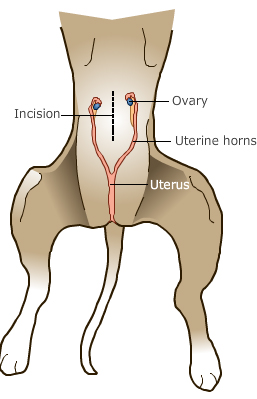
Spaying your pet is an important part of preventative health care. We recommend that all pets not intended for breeding or showing be spayed, ideally at 5 to 6 months of age. Spaying does not interfere with a working dog’s ability (e.g.: hunting dog), and with proper diet and exercise, it should not result in a lazy, obese pet.
There are many health benefits that result from spaying your pet:
-
Spaying eliminates the risk of pyometra, a life threatening infection of the uterus.
-
The risk of mammary cancer later in life is virtually eliminated if your pet is spayed before her first heat.
-
Spaying eliminates the risk of unwanted pregnancy which contributes to the pet overpopulation problem, and results in many unwanted pets being euthanized in animal shelters every year.
-
If complications arise during pregnancy, a cesarean section surgery may be necessary which can be costly and can risk the health of your pet.
- Female cats in heat are loud and embarrassing, and will go in and out of heat continuously if not bred.
Spaying, which involves removing the ovaries and uterus, is a surgical procedure and does need to be performed with the pet under anesthesia. We follow strict protocols and continually monitor your pet’s vital signs to help ensure her safety. Please see the descriptions under Anesthesia and Patient Monitoring for more information on what we do to keep your pet safe.
To set up an appointment to have your pet spayed or to learn more about this procedure, call or visit our clinic. If you are struggling with the decision of whether to spay your pet, please call us so we can discuss your concerns.

